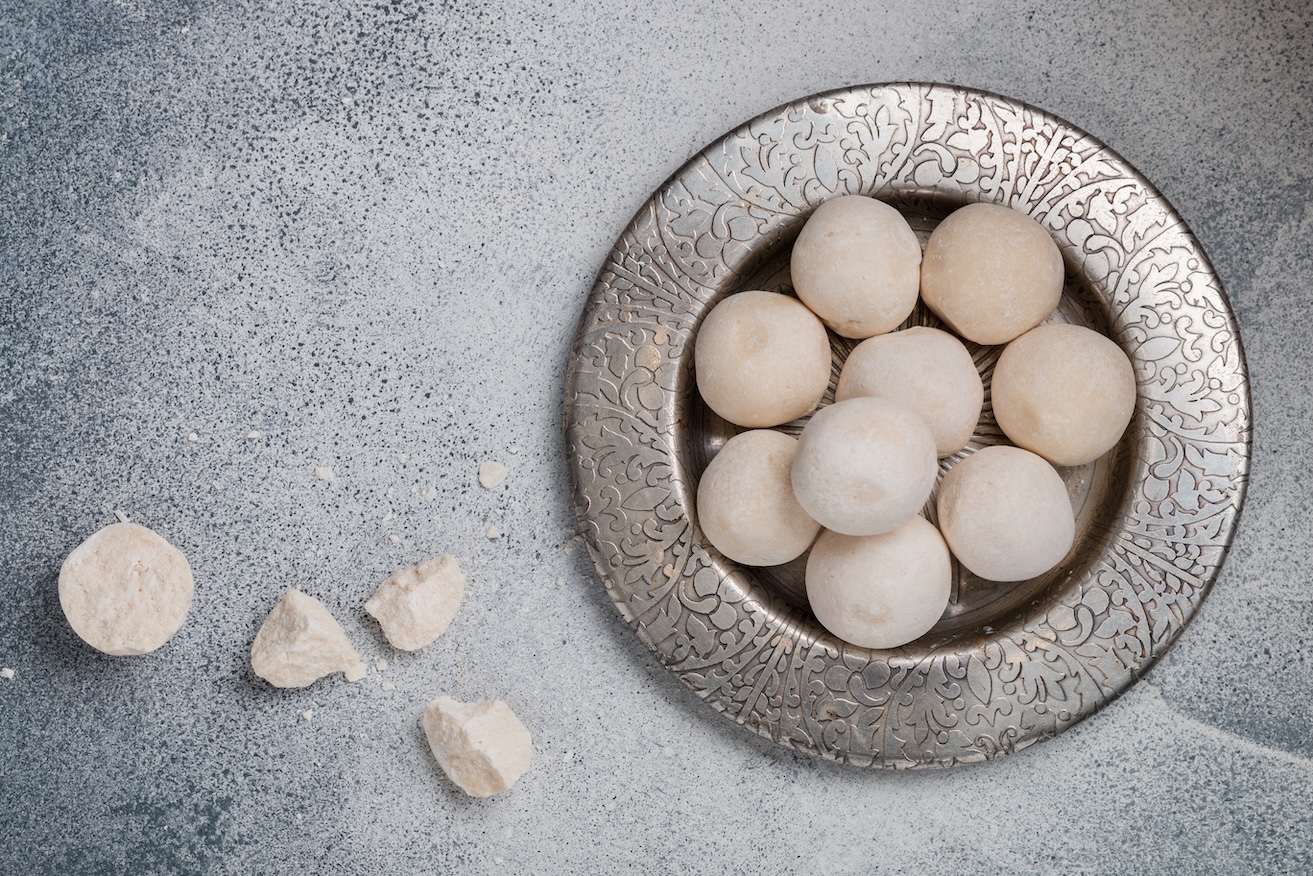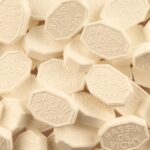Qurt sustained nomads across Central Asia for centuries. These small balls are long-lasting, easy to carry, and packed with protein and calcium. The name derives from the word for “dry” in many Turkic languages and is made by straining fermented milk from a sheep, goat, cow, camel, or mare until it’s thick enough to be rolled into balls and dried in the sun. Different variations exist throughout Central Asia, the Caucasus, and the Middle East, including the Persian kashk, Jordanian jameed, and Armenian chortan.
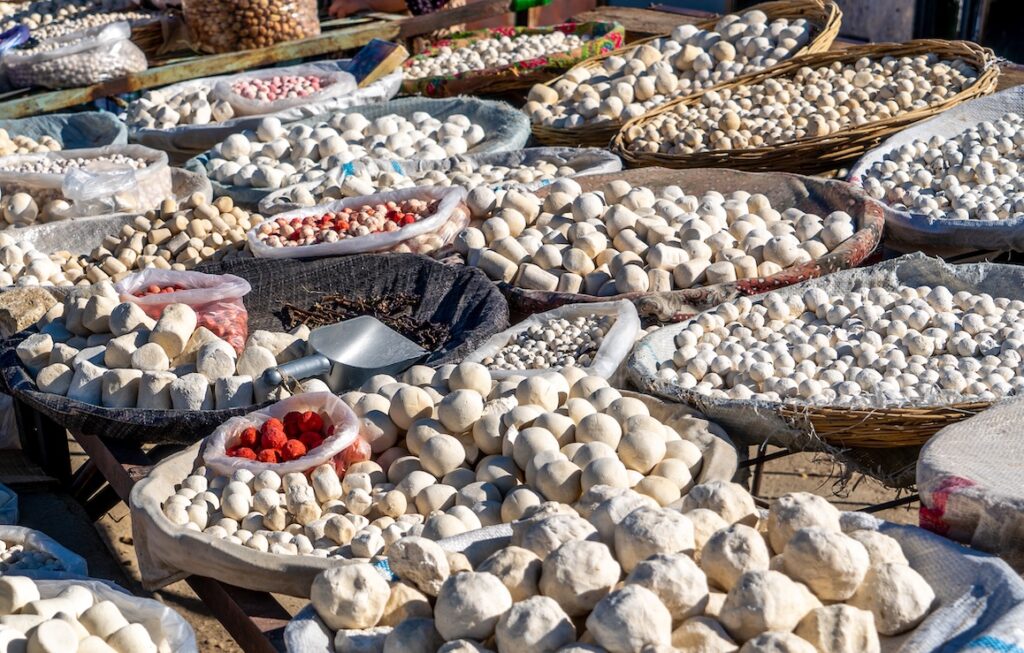
Qurt’s portable nature and long shelf life made it an ideal road food for nomadic peoples and dates at least as far back as the seventh century B.C. when the Scythians roamed the Eurasian Steppe. Kazakh, Kyrgyz, Turkmen, Uzbek, and other groups of herders took along versions as they moved to graze their animals. During the 12th and 13th centuries, it is believed to have given nomads a military advantage by allowing them to travel light. Centuries later, freeze-dried qurt nourished Soviet cosmonauts in space. Today, it’s still hailed as a source of longevity, said to improve digestion, ward off osteoporosis, and support the health of children. While qurt is traditionally made at home in rural areas and bought by city-dwellers at markets, mass-produced versions are now available at grocery stores and online.
You can make your own qurt at home, the way it’s done in Central Asian villages. However, it’s a multiday process especially if you don’t have access to sunny, dry weather,
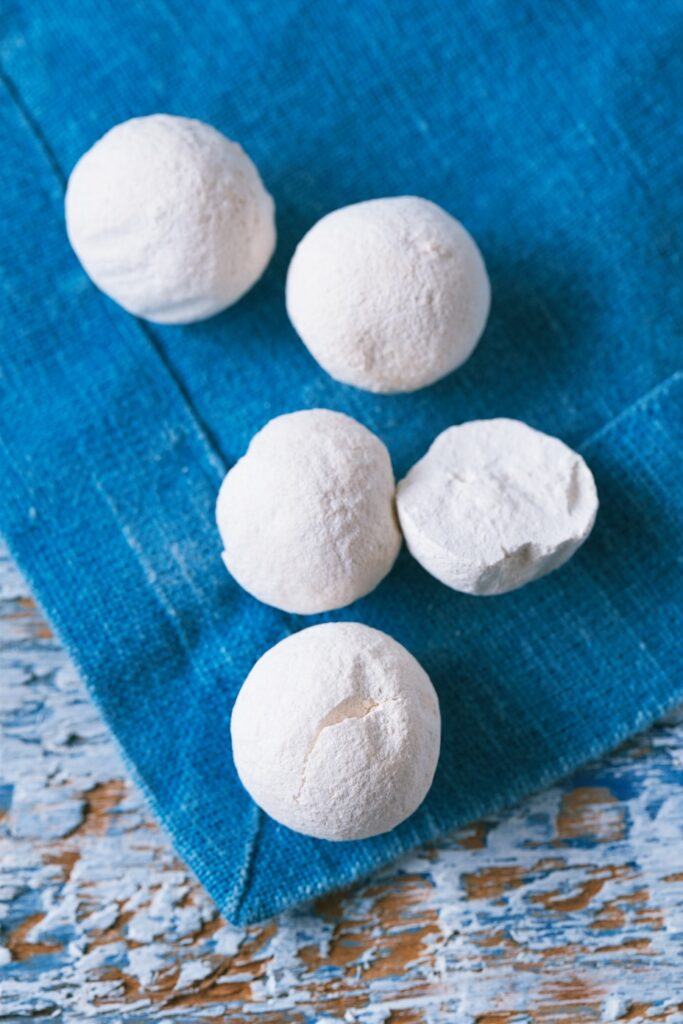
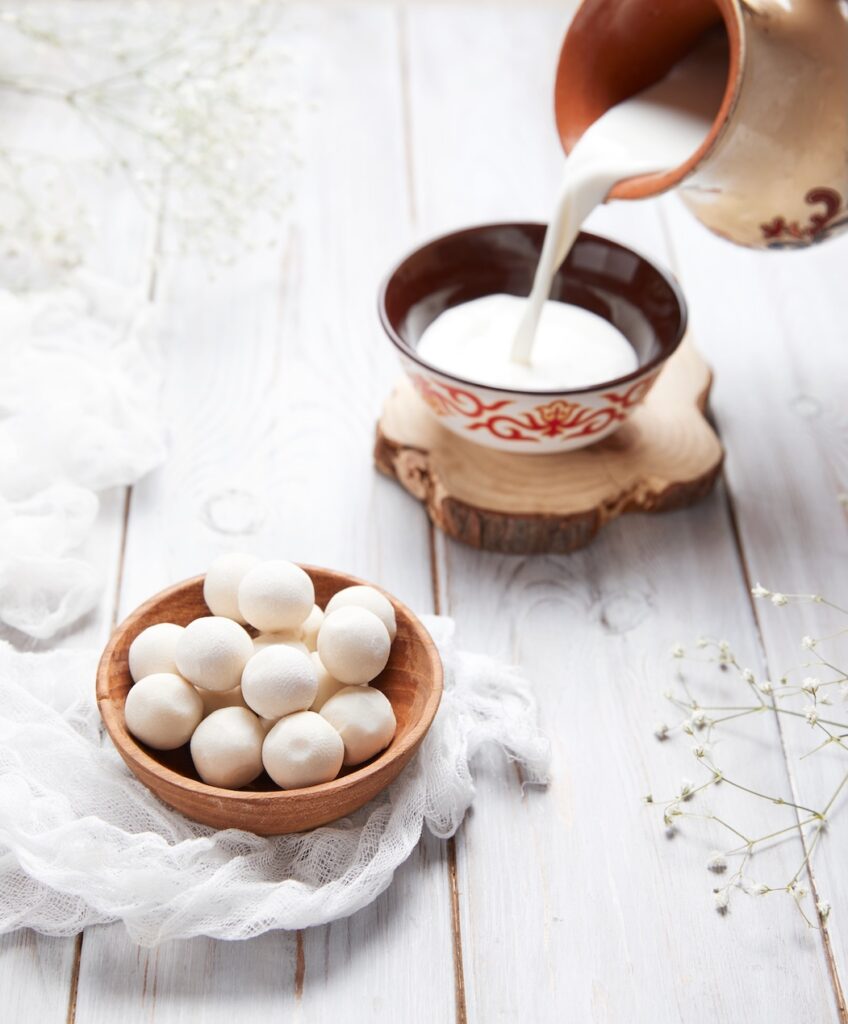
Homemade Qurt
Adapted from recipes by Malika Sharipova, Max Malkiel, and “Recipes from an Uzbek.”
Note: Methods and terms for the various dairy products below may vary by culture and location.
Ingredients
2 liters of whole or low-fat milk
6 tablespoons of plain Greek yogurt
Salt to taste
Dried herbs and spices to taste (optional)
Step 1
To make qurt, first, you need to make suzma, a creamy drained yogurt with a spreadable consistency. To make suzma, you need to make qatiq, a natural (and also delicious) drinkable yogurt. If you’d like to speed up the process, and you can find suzma for purchase in your area, you can also start there and skip to Step 3.
To make the qatiq, heat the milk in a pot to about 122° F. If you don’t have a thermometer, turn the heat off when the milk is noticeably warm, but you can stand to hold your finger in it for 10 seconds without discomfort. Then stir in the yogurt. At this point, the contents of your pot will still be milky in consistency. Pour the mixture into glass jars and wrap them with towels to keep them warm. Leave the wrapped jars in a warm place and let them ferment for eight hours.
Step 2
Now, it’s time to turn your qatiq into suzma. First, add salt to taste. Then carefully pour your qatiq into a flour sack towel. Secure the top of the towel with a rubber band and hang it over a bowl or your sink to drain. You can also use a cheesecloth, but make sure it’s not too gauzy. The qatiq should drip steadily as it drains, but you don’t want it to gush through all at once. Leave it for about eight hours as the whey separates.
Step 3
Now we have suzma; set some aside to eat on bread or as a dip for vegetables. If you’ve purchased your suzma, it may be thick enough to begin rolling into qurt (Step 4). However, if you made your own, you may need to let it drain in the cloth for another few days to reach the optimal consistency.
There is no exact timeline, but the suzma is ready to be rolled when you can stand a spoon in it.
Step 4
Once your suzma is nice and thick, add salt to taste and any additions, like ground red pepper or dried herbs. Roll it into balls, keeping in mind that smaller ones will dry quicker.
Step 5
Put your qurt balls on a wooden cutting board, cover them with a clean dish towel, and leave them in a warm, sunny place to dry for several days, depending on how hard you’d like them to be. If that is not possible, you can use Max Malkiel’s method. Set your oven on the lowest possible temperature and place your qurt inside on a baking sheet lined with parchment paper for an hour. Do not preheat the oven first.
Your qurt should now be a bit rubbery. Dry the balls with a hair dryer on full power for about 10 minutes. Set aside to dry further at room temperature. Repeat the oven and hair dryer steps three days in a row. For harder qurt, leave to dry for a few more days at room temperature.
Enjoy your qurt and go slowly. A little bit of the salty stuff goes a long way! Store in a breathable cloth bag in a dry place or in a paper bag in the fridge.
(Source: Atlas Obscura)

